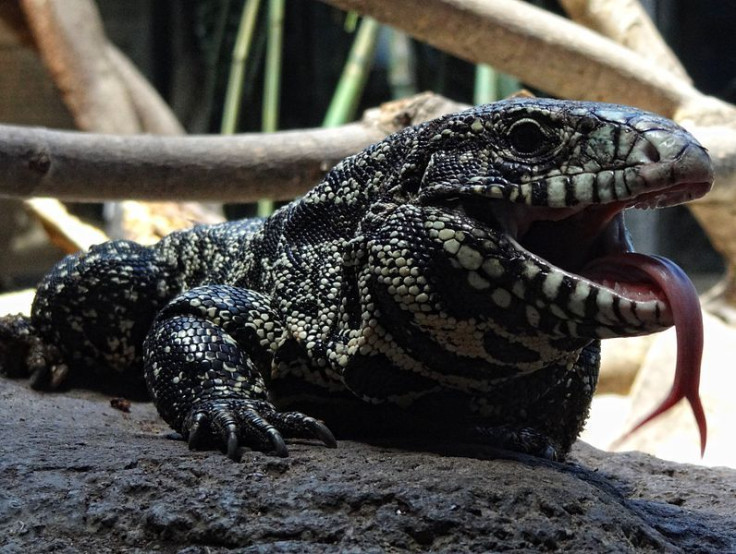Large Black-And-White Tegu Invades Florida County And ‘Eats Everything,’ Where Did The Invasive Lizard Come From?

Hillsborough County, Fla., which includes Tampa, is being overrun by a striped, four-legged reptile with a voracious appetite and a bite capable of turning human fingers into powder. The exotic black-and-white tegu, native to the tropical rain forests of South America, are breeding and eating their way through the Florida habitat. Experts fear the invasive lizard will displace native species that belong in the Sunshine State.
According to USA Today, Florida Fish and Wildlife Conservation Commission officials have spotted more than 100 of the exotic lizards roaming Hillsborough County. Animal control experts have spent three years rounding up black-and-white tegus, which can reach up to 4 feet in length, in Florida. The FWC sets traps equipped with raw chicken eggs across private property and parkland. Once captured, the lizards are euthanized.
"They produce rapidly, laying between 25 and 50 eggs at a time," FWC biologist Tessie Offner said in a statement, according to WTSP News. "They eat everything from plants to other animals with bones and shells -- also amphibians and birds."
According to Offner, black-and-white tegus have highly acidic stomachs that can dissolve shells, including tortoise shells, and animal bones. Their powerful jaws can exert forces up to 220 pounds per square inch (a cougar has a PSI of 350.)
This doesn’t mean Floridians are running down the streets in terror with a gang of bloodthirsty tegus on their heels; according to Exotic Pets, the lizards are actually pretty docile. Nonetheless, invasive species tend to wreak havoc on local flora and fauna. Biologists fear that if the lizard is allowed to reproduce freely, it could throw the whole ecosystem out of whack.
"We had a whole gopher turtle preserve on our 1,100 acres and now they are all gone," Marvel Stewart, a volunteer horse rescue worker, told WTSP News. "We see four to five a week on our property."
So where did Florida’s invasive lizard come from in the first place? FWC officials say the lizards were once pets, but that pet owners often release them into the wild when keeping them in captivity becomes a nuisance.
"People buy these cute little lizards at the pet store and then they grow to be too big for an aquarium and they are too expensive to feed and then they just set them free in the preserves," Offner said.
Others probably escaped from captive breeding facilities in south Miami-Dade County. Biologists hope to capture as many tegus as they can before the lizards make their way into neighboring Everglades National Park.
“When we first found out about them in 2008, we thought we had a chance to nip this population in the bud,” National Park Service’s Tony Pernas, who co-chairs the Everglades Cooperative Invasive Species Management Area group, told the Miami Herald. “Now we’ve changed from eradication mode to containment mode.”
Florida is no stranger to invasive species. Since the 1990s, several species of giant constrictor snakes, such as the Burmese python, have established populations in the Everglades. The snakes grow rapidly and threaten to native bird, reptile and rodent populations, according to the U.S. Geological Survey.
© Copyright IBTimes 2025. All rights reserved.






















